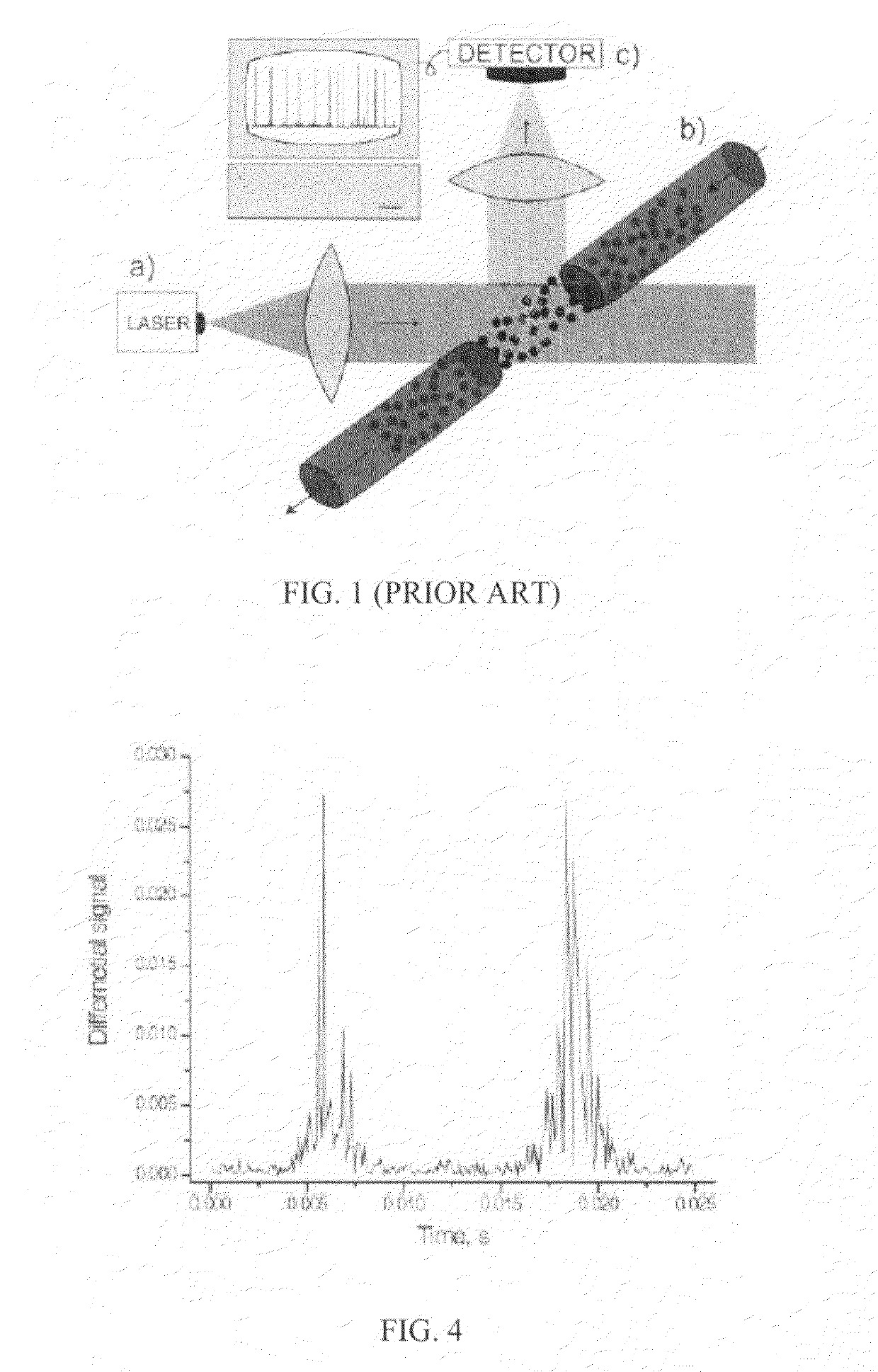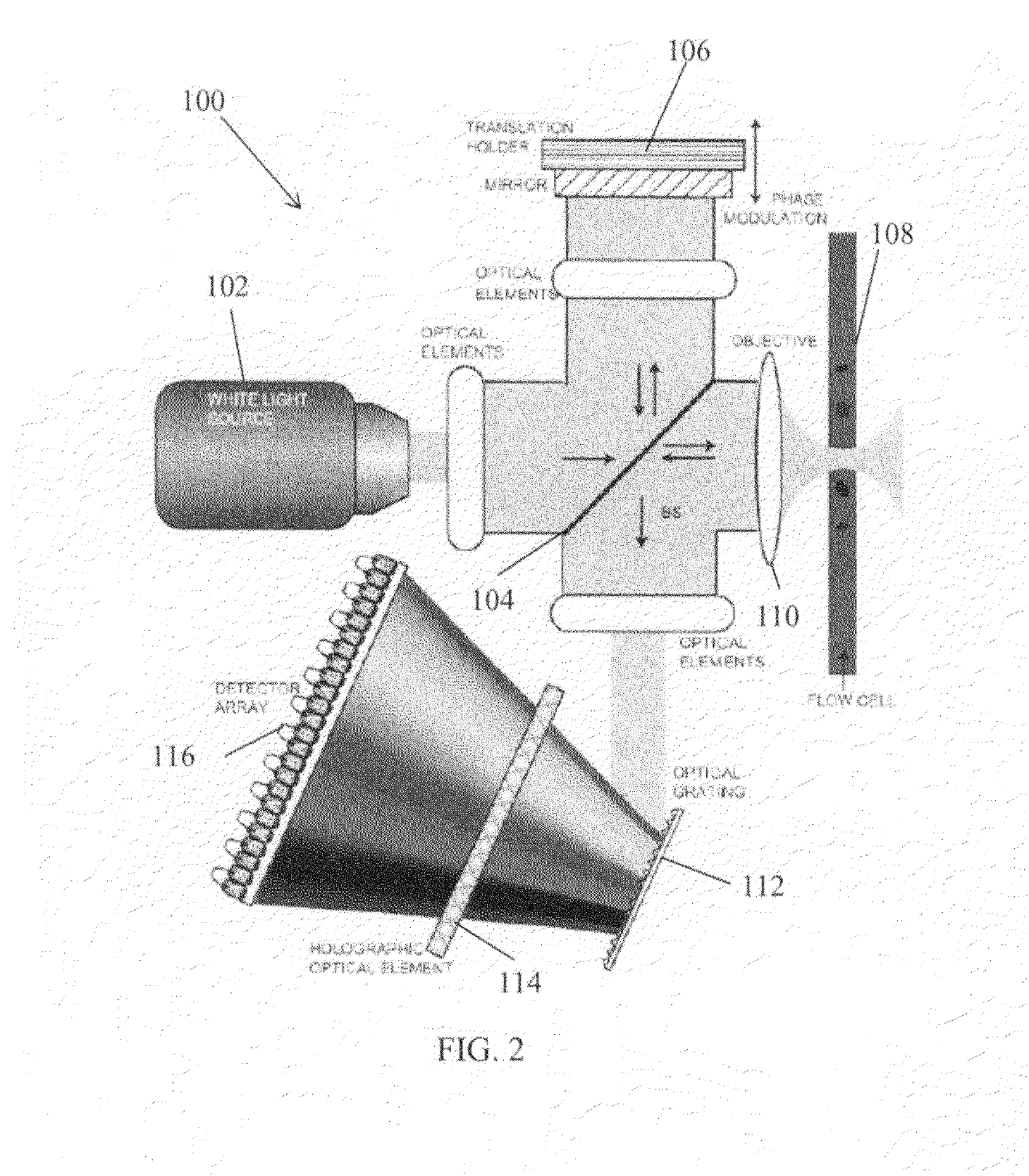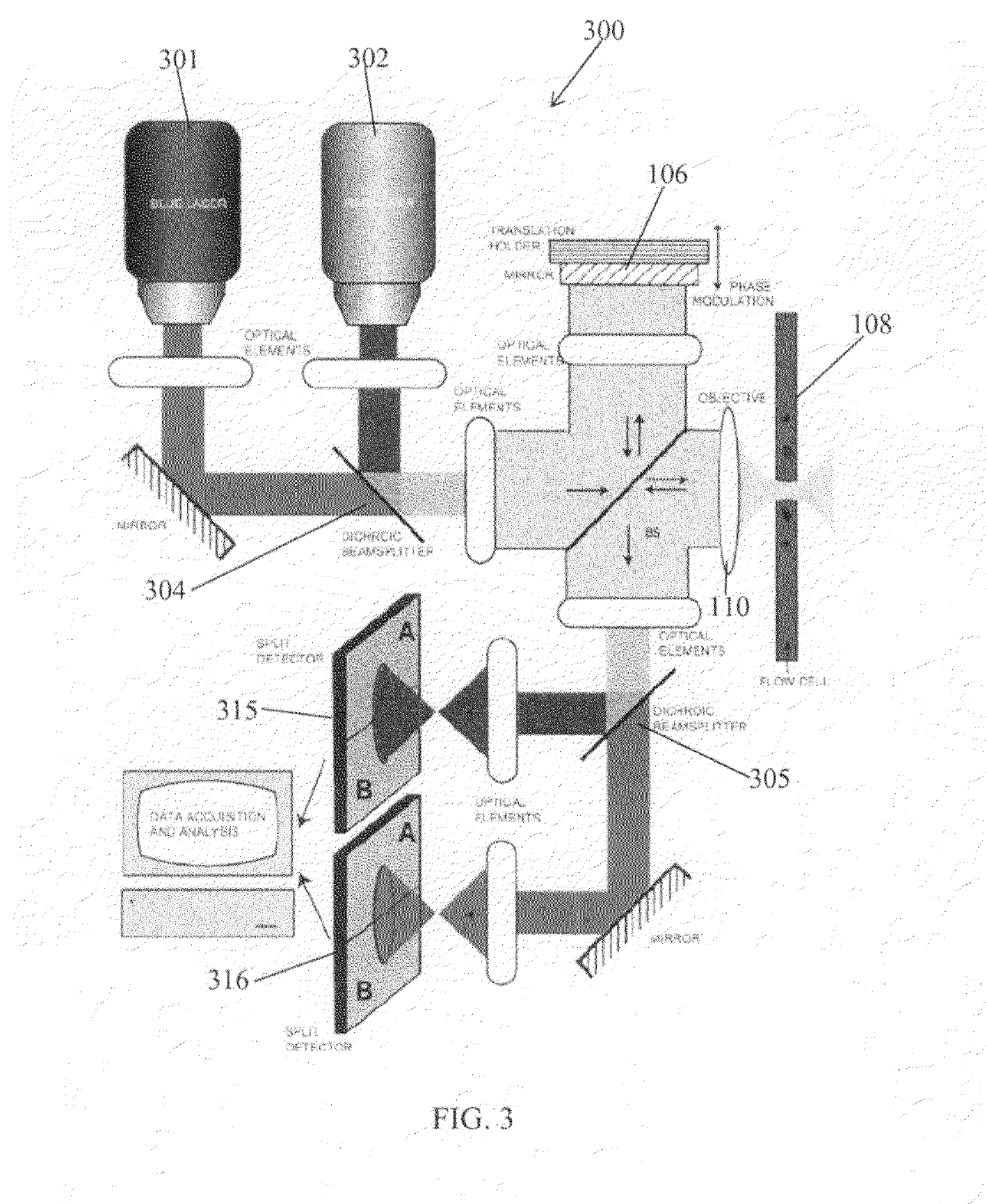Multi-color hetereodyne interferometric apparatus and method for sizing nanoparticles
a multi-color, interferometric technology, applied in the direction of particle and sedimentation analysis, measurement devices, instruments, etc., can solve the problems of difficult detection of nanoparticles, adverse health effects, inheritable genetic changes,
- Summary
- Abstract
- Description
- Claims
- Application Information
AI Technical Summary
Benefits of technology
Problems solved by technology
Method used
Image
Examples
Embodiment Construction
[0031]The present invention will be set forth in detail with reference to the drawings, in which like reference numerals refer to like elements or operational steps throughout.
[0032]FIG. 2 illustrates a schematic of a particle detector 100, according to at least one embodiment of the present invention. The excitation light from a light source 102 is split into two parts by a nonpolarizing beamsplitter 104. One part of the beam is reflected back by an oscillating mirror 106, creating a reference beam arm. The other part is focused inside a microfluidic channel 108, containing the particles of interest. The dimensions of the microfluidic channel 108 are comparable to the size of the focus. In one embodiment, the intensity distribution of the focused light across the focus is uniform, so that particles crossing the focus at different parts of the nanochannel are subject to equal illumination conditions.
[0033]Particles are moving through the focus via liquid flow. As a particle travels ...
PUM
 Login to View More
Login to View More Abstract
Description
Claims
Application Information
 Login to View More
Login to View More - R&D
- Intellectual Property
- Life Sciences
- Materials
- Tech Scout
- Unparalleled Data Quality
- Higher Quality Content
- 60% Fewer Hallucinations
Browse by: Latest US Patents, China's latest patents, Technical Efficacy Thesaurus, Application Domain, Technology Topic, Popular Technical Reports.
© 2025 PatSnap. All rights reserved.Legal|Privacy policy|Modern Slavery Act Transparency Statement|Sitemap|About US| Contact US: help@patsnap.com



